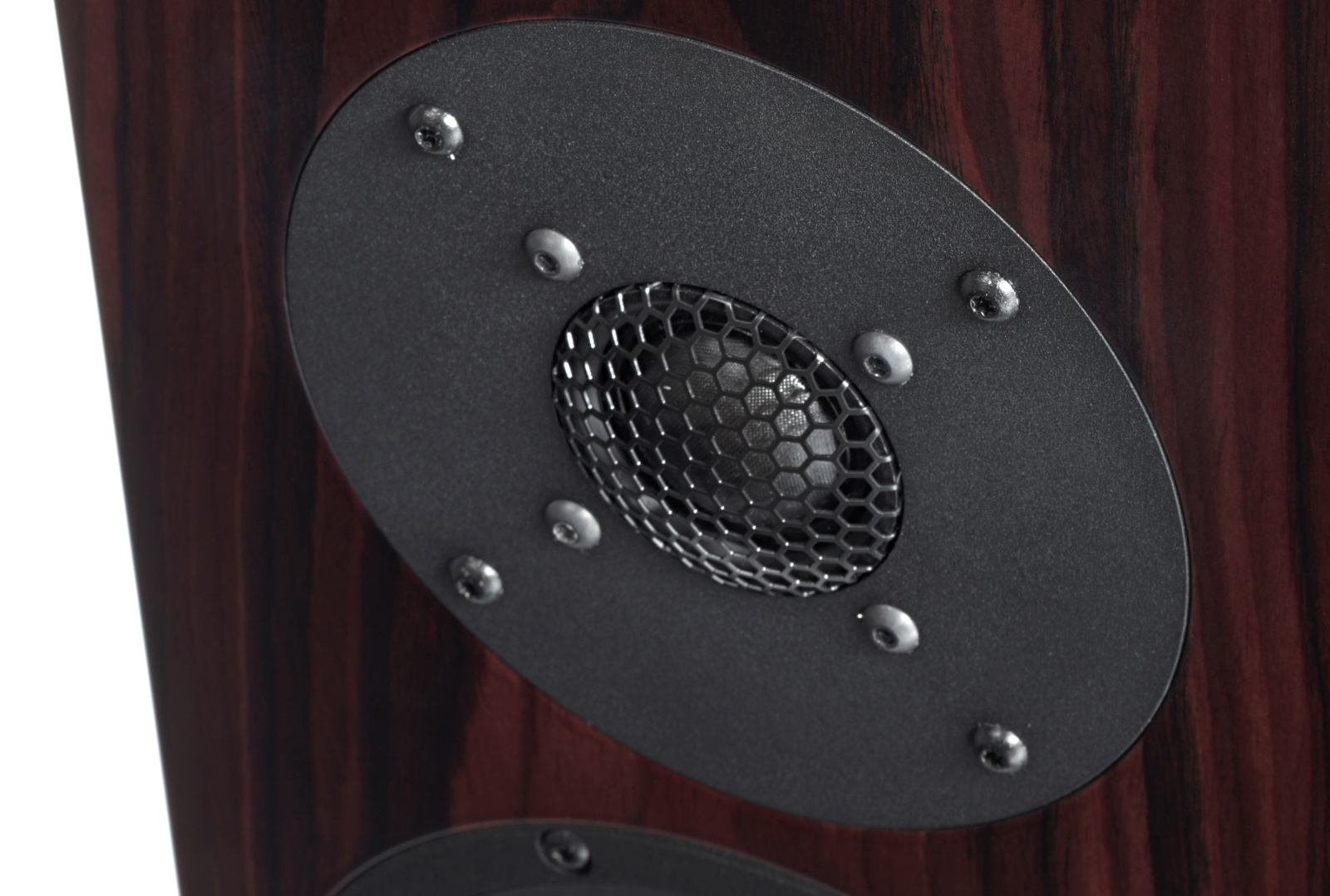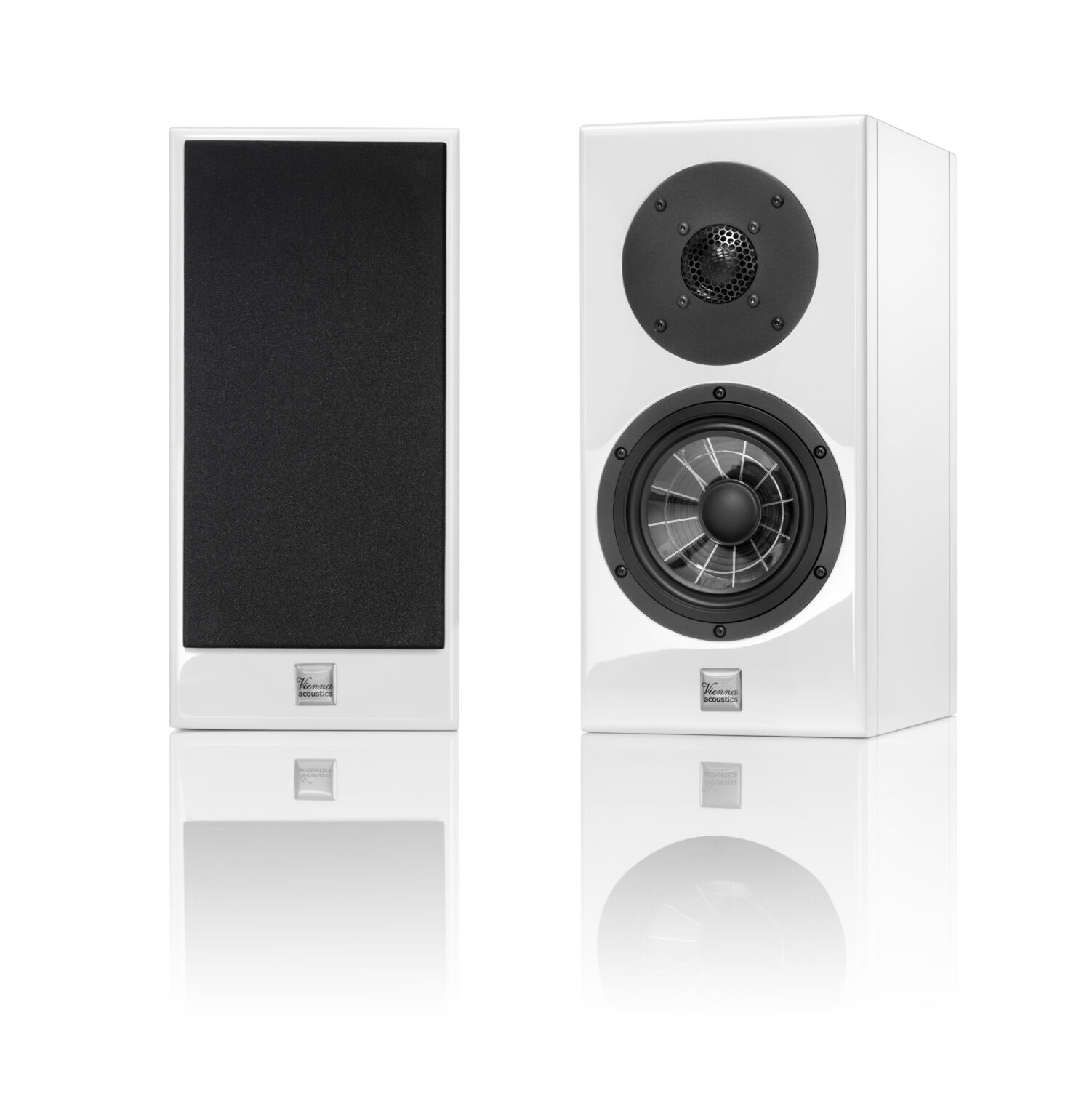I certainly did enjoy auditioning these little speakers and found them to be well made with excellent fit and finish. If you are in the market for a pair of great-sounding small speakers, then the Haydn SE Signatures are worthy of an audition.
The Vienna Acoustics Haydn SE Signature Speakers have a very polite sonic signature that lends itself well to classical music. These speakers also had perhaps the best sound staging qualities I have heard from any pair of speakers ever. That is a serious statement and marks their strongest quality. These little speakers are well-designed and very well put together, which would be expected considering their not insignificant retail price.
Vienna Acoustics Haydn SE Signature Bookshelf Speakers
- Excellent soundstage integrity
- Strong, unwavering center image
- Smooth frequency response
- Balanced upper bass
- Dynamically forgiving
- Naturally limited bass extension
- Excellent build quality
- Highly inert cabinet
- Best suited for small rooms or nearfield applications
I have been in a protracted process of making an inter-state move. It has been a slow slog of a move, and I am currently living in a rental home. My listening room in this home is significantly smaller than the room I had in my old home. So, I needed to cobble together an appropriate system for this smaller space. That’s when I identified these gorgeous little bookshelf speakers for the first review in my new space.
I am familiar with Vienna Acoustics, but I have never had any of their speakers in my own home. For this review, I requested a pair of the Vienna Acoustics Haydn SE Signature speakers. They really look cool, and I was rather excited to check them out over a substantial review period.
These speakers are two-way, ported speakers with 6” main drivers and 1.1” silk dome tweeters. The review pair I received had a gorgeous premium rosewood finish. Let me reserve further discussion for the main body of my review.
Design:
2-Driver, 2-Way Bookshelf Speakers
MFR:
40 Hz – 20 kHz
Tweeter:
1.1″ Hand-Coated Vienna Acoustics Silk Dome
Midrange/Bass Driver:
6” Spider-ConeTM X3P
Loading:
Rear-Ported Bass Reflex
Crossover Frequency (Hz):
Not Stated
Crossover Type:
Two-Way 6dB/12dB Bessel
Sensitivity:
88.5 dB
Nominal Impedance:
4 Ohms
Recommended Amplifier Power (Cont. / Peak):
Not Stated
Weight:
22 lbs. (10kg) each
Dimensions (H x W x D):
14.2″ (361 mm) x 6.85″ (174 mm) x 10.4″ (265 mm)
Available Finishes:
Cherry, Premium Rosewood, Piano Black, and Piano White
MSRP (Pair):
$2,995/pair Satin Black/Satin White (Finish was released a few months ago)
$3,495/pair Piano Black/Piano White/Cherry
$3,995/pair in Premium Rosewood
Website:
Company:
SECRETS Tags:
loudspeaker, bookshelf, standmount, fabric dome tweeter, Vienna Acoustics, spidercone X3P woofer, linear crossover
Secrets Sponsor
I would venture to guess that a majority of loudspeaker companies focus the thrust of their R&D budgets on flagship models and then let the technological advancements “trickle down” from there. Of course, there are many examples of companies focusing on developing bespoke speakers at low price points, but that is the exception and not the rule. In the case of these little speakers from Vienna Acoustic, it appears the designs of the drivers, the crossovers, and the abinets all have their roots in the work they have done on past flagship models. I say past flagship designs because Vienna Acoustics’ current top-of-the-line offerings are starting to have newer versions of the drivers than what is seen in the Haydn SE Signature speakers.
Be that as it may, the Haydn SE Signatures are tidy little stand-mount speakers of a very modest size. These speakers are only about 14” tall and 7” wide. Despite their diminutive size, they have significant heft, clocking in at 22 lbs. per speaker.
The 6” main driver is called a “Spider-ConeTM X3P”. These drivers are said to be predicated on the drivers developed for the Beethoven Concert Grand Reference loudspeakers. The manufacturer does not provide specifics regarding the woofer’s materials, but being that they are clear cones, I assume they are sandwich cones made with layers of PP/TPX material. However, your guess is as good as mine when you see that Vienna Acoustics claims the driver cones have “three additional polymers in [their] composition”. Interesting. They claim that this upgraded cone material improves inner detail, quietness, and control.
The woofer cones have “ribs” behind them to add additional stiffness. Vienna Acoustics states that the stiffening ribs in the Haydn SE Signatures’ woofers have been optimized for increased output, extension, and control.
The stated woofer loading is a QB3 bass reflex design with a rear port. This is a popular quasi-Butterworth design that is useful to provide decent bass output from a small enclosure.
The tweeters are large-ish, measuring 1.1” in diameter. The silk domes are claimed to be “handcrafted”. The large size and overall design allow the tweeters to play “well down into the midrange region.” Vienna Acoustics does not state the crossover frequency of the crossovers. They do say that the design is a Bessel network with a 6dB high pass roll off and a 12dB low pass function. Without knowing the crossover frequency, I will assume the larger tweeter is necessary to cover the additional range anticipated with the tweeters’ gentle roll-off.
Speaking of the crossover network, Vienna Acoustics does provide some other important details (though not all the basic information I would like). They claim that the crossovers in the Haydn SE Signatures are “linear” in design with “carefully arranged” signal paths to mitigate interactions among the crossover components. Hmmmm. Those internal components comprise tight-tolerance MKP capacitors, air-core chokes, and inductance-free metal film resistors.
As mentioned above, these are bass reflex speakers with small rear-firing ports. I both like and dislike rear ports depending on the parameters of any given system. In my case, I had ample space to keep the speakers away from the rear wall and did not have any negative effects that one can have with rear ports that may have undue room interactions.
This brings me to the lovely speaker cabinets. The Haydn SE Signature speakers are available in four basic finishes: Cherry, Premium Rosewood, Piano Black, and Piano White. My review speakers were in Rosewood, and the finish was impeccable. It also felt very robust, as if it would last generations. I was also smitten by the gorgeous, oversized binding posts. Finally, the speakers came with well-made magnetic grilles. The grilles are black cloth and have strong magnets to keep everything in place.
I placed the speakers on a pair of heavy-duty steel speaker stands. As per my usual practice, I started with the speakers positioned where the speakers and my head would form the apexes of an equilateral triangle. In my rental home, that triangle is approximately 9’ per side.
I was able to get the speakers out into the room such that there was approximately 3’ from the front wall to the rear panel of the speaker cabinets. I felt this gave me the best bass balance in my room.
The Haydn SE Signature speakers only have one pair of binding posts per speaker, so I was not able to bi-wire or bi-amp the speakers. Instead, I connected them with a single pair of 14-gauge copper speaker cables that are terminated with gold-plated banana plugs.
The amplifier I used in my review was the new ARCAM SA45 integrated amplifier. This lovely streaming amplifier is something of a “Swiss Army Knife” with a wide range of functionality. One of its features is that it has Dirac Live built in, which I wanted to use since my rental house doesn’t have the greatest listening space (though it ain’t bad, either, as I have come to find out). Sadly, the ARCAM’s implementation of Dirac Live is still waiting for a firmware update, so I auditioned the speakers with no room correction.
The ARCAM does have line-level subwoofer outputs. This was handy as I did about 1/3 of my listening with the Haydn SE Signatures driven full-range, but with a Martin Logan subwoofer augmenting the output below about 60 – 70 Hz.
Once I had everything hooked up and working, I was able to tweak the speaker placement in small increments to optimize the audible experience. I didn’t change the placement of the speakers by more than a couple of inches here or there. What I did play with more was the toe-in. I wound with the speakers slightly toed-in so they would converge several feet behind the listening position, which, coincidentally, was largely the setup recommended in the owner’s manual.
I will discuss further in the In Use section below, but the Haydn SE Signature speakers proved to be imaging champions. I am not sure if that was due to their small size, their narrow cabinets, or some other sorcery. It didn’t really matter how they did it, just rest assured these speakers paint as convincing a soundstage as I have heard from any speaker I have reviewed over several decades.
Once I had the speakers set up, I proceeded to let them break in over a few weeks of normal daily use. Usually, our review units have already been tested by other reviewers or may have been demo units at a trade show or something like that. In those cases, no break-in is required.
In this case, the review samples were brand new from off the regular production line, so I felt some break-in would be warranted. That’s why I ran them in for several weeks before sitting down for some serious listening.
These speakers are quite small and are at their best in a smaller room. That is one reason I wanted to review them: I have a “smallish” room in this rental house. At least this room is significantly smaller than my main listening space in our last home. However, I think the Haydn SE Signature speakers would be more at home in an even smaller space. Think of a typical bedroom or office. I say this because they were able to fill the room with sound, but I felt I had to drive them a little harder than their comfort zone to get the job done.
Another thing about the Vienna Acoustics Haydn SE Signature speakers is that they have a very distinctive sonic signature. To begin with, the bass was very polite, and this is, in fact, a good quality. I don’t want to sound too cliché about it, but it was definitely welcome to hear small speakers that didn’t try and sound bigger by boosting the mid bass. They had balanced and tuneful bass down to their lower limit, and then it rolled off. Kudos to Vienna Acoustics for making small speakers with balanced bass. However, the useful lower limit of the bass was actually quite limited, and I almost longed for a pair of speakers with some added ripeness in the lower registers.
I reconciled this by doing a large portion of my analysis with a Martin Logan subwoofer in play. I don’t think of myself as a bass freak because I am not. However, I use subwoofers even when listening to my VIVID KAYA 90’s. That’s because I enjoy the way proper low bass opens up the soundstage and enhances my musical enjoyment of all genres and sources of music.
Speaking of frequency extremes, the tweeters in the Haydn SE Signatures were certainly exquisite. But, like the woofers, the tweeters played beautifully within their useful range while sounding like they didn’t extend out much beyond the upper limit of musical fundamentals. This means that they played all the notes I can hear at my age, but I could not hear or even sense the higher harmonics I get from other speakers.
So, I was in the midst of a review where these small speakers sounded excellent from about 80 Hz to about 10,000 Hz. Anything outside this envelope was subjectively less prominent than sounds within this stated range. I was able to improve the bass with a subwoofer, and I lived with what I would call “polite” treble. I would say that I much prefer the Haydn SE Signatures’ treble over speakers I have heard that are too forward, too bright. It was just that the Haydn SE Signatures sounded a little dark by comparison.
What I heard within the operable frequency range was nothing short of amazing. The Vienna Acoustics Haydn SE Signature speakers put up the best soundstage I can remember from any speakers I have heard in my own system, ever. Once I had them set up and dialed in (which was not difficult for these very forgiving speakers), I heard the placement of instruments unlike anything I can recall hearing before.
This meant that individual voices and instruments were easily pinpointed in space and did not waver at all throughout the performance. But, even more remarkably, I was able to get a solid center image between the speakers, no matter where I sat on the small sectional I put in this room. Even the other speakers I had on hand that I know soundstage well could not match the incredible imaging I got with the Haydn SE Signature speakers.
In practice, this meant that the Haydn SE Signature speakers were easy to set up and allowed all my guests to enjoy a proper performance, regardless of where they sat in the room.
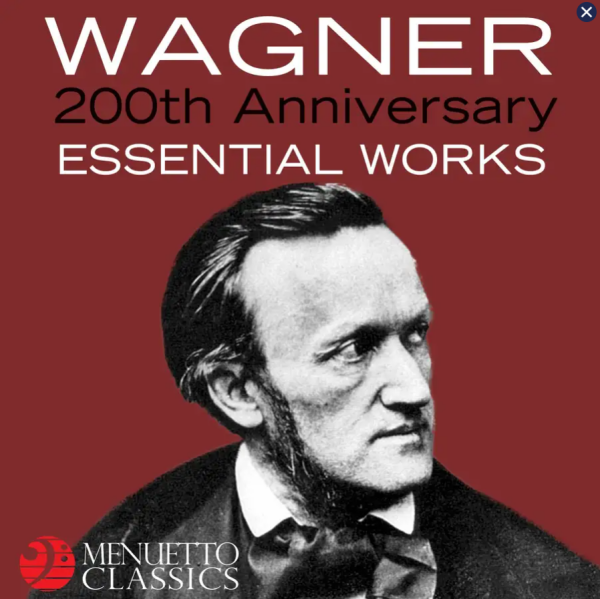
Wagner: 200th Anniversary – Essential Works
In my experience, the sound signature of these speakers was near perfect for enjoying classical music. For example, the 2013 release “Essential Wagner” by Classical Expressions had me enraptured. The strings sounded very natural and properly fleshed out with nary a hint of any stridency. The horns likewise came through sounding just like horns heard in real life. All this was spread across a wide, yet focused soundstage, which highlighted the hall in many of the tracks. I could not have asked for anything more from these little speakers.
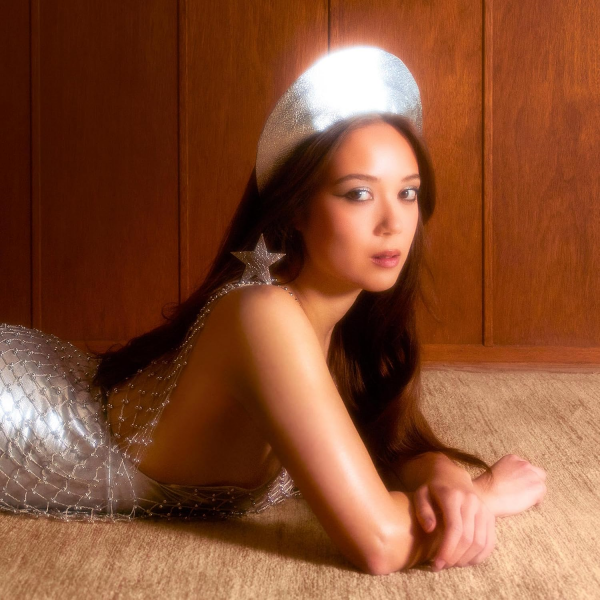
Laufey, “Bewitched”
Other standout recordings I enjoyed included Laufey’s Bewitched album (2023). The little Haydn SE Signature speakers captured all the sumptuous warmth in Laufey’s singing. They also reproduced the piano with excellent, natural attack and decay. The bass was filled in by the external subwoofer, and the brushed cymbals were tactile if not fully extended. I enjoyed this whole album during my review.
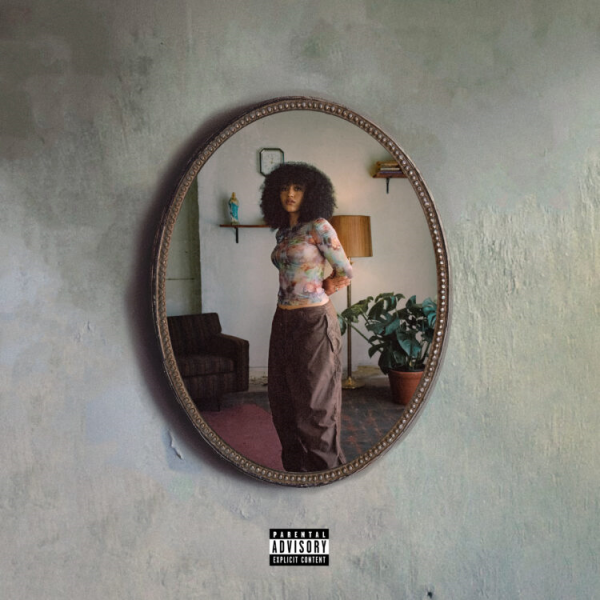
Jenevieve, “CRYSALIS”
When it came to popular music, the Haydn SE Signatures’ strengths were welcome. Take the recent Jenevieve release, CRYSALIS (2023). Throughout this album, I became embedded with the music and couldn’t even think about anything else. The bass was spry and full (with a sub) while the midrange again highlighted an amazing female vocal. It was a very enjoyable listen.

Thunderbolts*
I also enjoyed some movie time with the 4K Blu-ray of Thunderbolts. This box-office flop is just the kind of movie I would latch onto, ha! The fact is, it was a really fun movie, and I enjoyed every minute of it. Though the Haydn SE Signatures needed to be driven fairly hard to take things to the cinematic levels I hoped for, they just were not able to reach the SPLs one might hear in an IMAX theater, for example. Nevertheless, when played within their limits, the sound from the Haydn SE Signatures left little to be desired.
Secrets Sponsor
The Vienna Acoustics Haydn SE Signature speakers really impressed me with their delightful performance and some of the best soundstaging/imaging I have heard in my main listening space.
- Incredible imaging allows wider placement
- Center image is tight and unwavering even when sitting off-center
- Tuneful bass within the speakers’ usable limits
- Does not have overly ripe mid bass
- High-quality binding posts
- Extremely solid and inert cabinet
- Beautiful finish (premium rosewood)
- Slightly larger main driver
- Improved dynamics and treble extension
The Vienna Acoustics Haydn SE Signature speakers are lovely little speakers that will satisfy listeners under the right settings and with appropriate program material. I found that they shone the most on classical and jazz.
They proved to have a sound signature that was very balanced but not overly extended on either end of the spectrum. I would always recommend a subwoofer with speakers such as these. Once I had a nice sub dialed in, I was able to enjoy other genres of music. And they played well on movies, albeit with limited SPL capabilities.
What these speakers really, really excelled at was their ability to put up a convincing soundstage and project a solid, unwavering center image throughout the room. When it comes to imaging, they were the best I have ever heard in my home. Until something else comes along to dethrone the Haydn SE Signatures, they will reign supreme as the soundstage champions!





